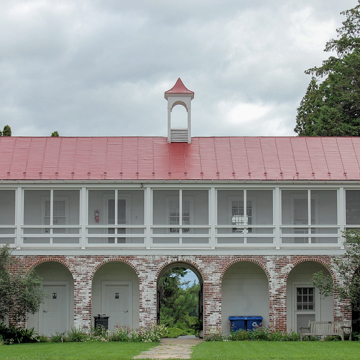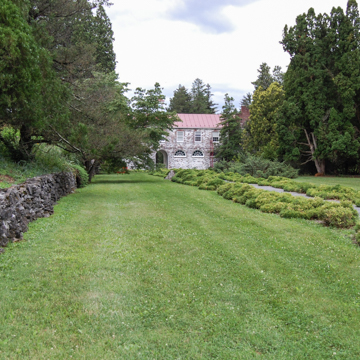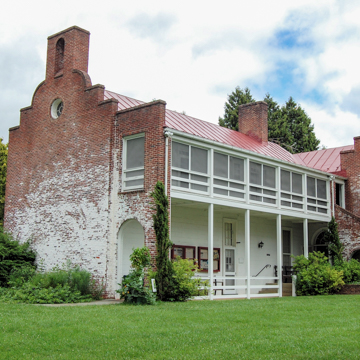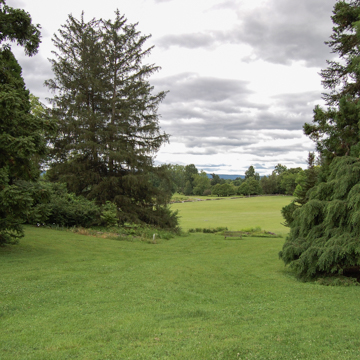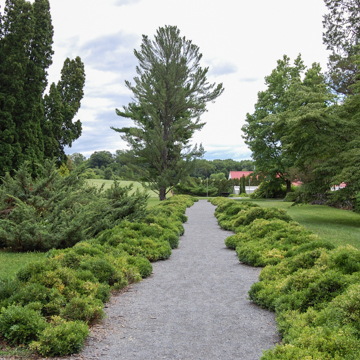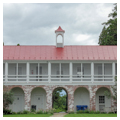Originally part of the Tuleyries estate, this 712-acre property was bequeathed to the University of Virginia in 1926 by Graham F. Blandy, a stockbroker originally from New York, who wanted to use the property to educate young men in farming practices. Since the university lacked an agricultural school, Blandy Farm was dedicated to the training of students and the public in botany, horticulture, and biology. When the university acquired the property, it contained several buildings, the most prominent of which was a c. 1825, two-story, ten-room brick slave quarters, distinctive for its parapeted stepped gable ends and its double-story rear galleries. Commonly referred to as the Quarters, this was converted into student and faculty housing and laboratories. Three Colonial Revival brick wings incorporating elements from the Quarters were built to form a U-shaped configuration. In 1927, Blandy's first director, Orland E. White, created a 172-acre arboretum surrounding the Quarters. Arranged according to an evolutionary sequence, it was designated as the State Arboretum of Virginia in 1986.
You are here
Blandy Experimental Farm
c. 1825; 1941, Stanislaw J. Makielski. Blandy Farm Ln., approximately 3 miles south of Boyce
If SAH Archipedia has been useful to you, please consider supporting it.
SAH Archipedia tells the story of the United States through its buildings, landscapes, and cities. This freely available resource empowers the public with authoritative knowledge that deepens their understanding and appreciation of the built environment. But the Society of Architectural Historians, which created SAH Archipedia with University of Virginia Press, needs your support to maintain the high-caliber research, writing, photography, cartography, editing, design, and programming that make SAH Archipedia a trusted online resource available to all who value the history of place, heritage tourism, and learning.

